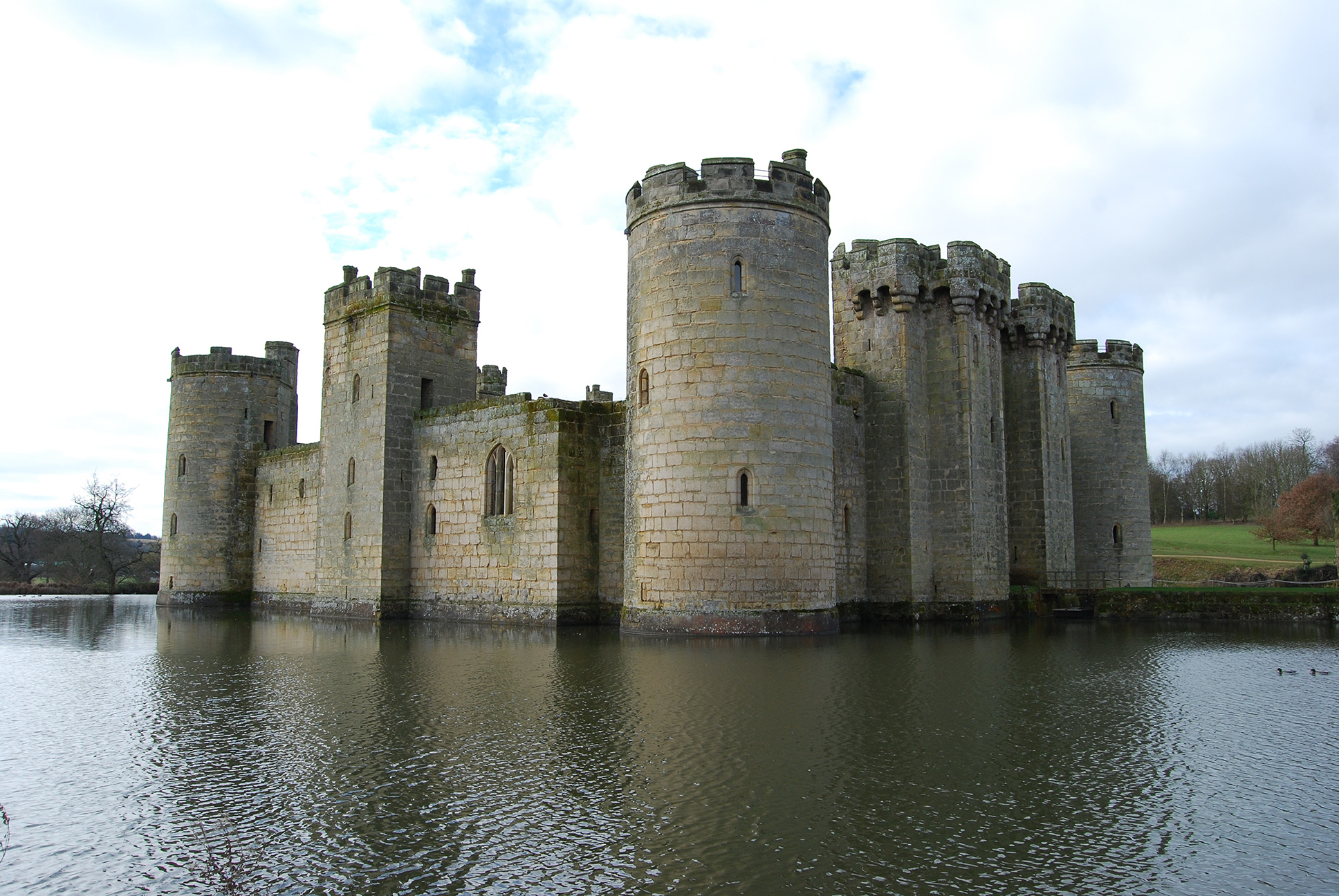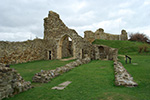History
Bodiam Castle resides in the beautiful countryside of East Sussex, England, southeast of London. On October 20th, 1385, King Richard II granted a license to crenelate to Sir Edward Dalyngrigge to help defend against future raids from the French in Southeast England. Bodiam Castle was one of the last castles built during the medieval period.

Sir Edward Dalyngrigge was a knight who fought under the banner of the Earl of Arundel during the Hundred Years' War at the battles of Vannes, Thouars, and Cressy. Upon his return from France in 1377, he married Elizabeth Wardeux, and through marriage, he acquired landholdings, including the manor of Bodiam.
Sir Edward sought permission from the king to build a castle at Bodiam, which was granted with the 1385 license to crenelate. The king required permission to build a castle to control who was building castles and prevent subjects from getting too powerful in the realm. To own a castle was a statement of rank and power, and there is never-ending debate as to whether Bodiam Castle was built for defense or more of a status symbol for Sir Edward to announce his position and newfound standing in society.
Instead of using the license to crenelate to fortify the existing manor house at Bodiam, Edward decided to build the castle at a new site near the River Rother. It is believed he relied on the help of mason Henry Yevele to help design Bodiam Castle. Henry was already involved in several other constructions in Kent, including Cooling Castle, which was similar in design to Bodiam but now lost to time.
The construction of Bodiam Castle was completed between 1390 and 1392, and Sir Edward would only have a few years to enjoy his new castle as he was dead by 1395, and his son, John, would inherit the castle. The castle would pass to several members of the Dalyngrigge family until the male line died out, and the castle passed to the Lewknor family via the marriage of Phillippe Dallingridge to Sir Thomas Lewknor. When they both died, Bodiam Castle passed to their son, Sir Roger Lewknor.
Sir Roger supported the House of Lancaster during the Wars of the Roses. When Richard III of the House of York ascended the throne in 1483, Sir Roger was accused of treason and raising men-at-arms. In November of 1483, Thomas Howard, Earl of Surrey, was permitted to besiege Bodiam Castle. There is no record of a siege ever occurring, but Roger surrendered without much resistance. The crown confiscated his lands, and Nicholas Rigby became constable of Bodiam Castle. When Henry VII took the crown, Bodiam Castle was returned to Sir Roger Lewknor. Bodiam Castle would pass through several generations of the Lewknor family.
In 1623, Sir Nicholas Tufton bought most of the Bodiam estate. He would later become the 1st Earl of Thanet. His son John, 2nd Earl of Thanet, inherited his father's lands in 1631 and, in 1639, bought Bodiam Castle, reuniting the possession of the manor and castle. During the English Civil War, John Tufton, who supported the Royalist cause, attacked Lewes and was involved in a Royalist defeat at the Battle of Muster Green in Haywards Heath. The Parliamentarians confiscated some of John's lands and fined him 9000 pounds (1.6 million today). To help pay his fine, Sir John sold Bodiam Castle to Nathaniel Powell in March of 1644 for 6000 pounds. After the Civil War, Bodiam Castle was slighted to make it indefensible by destroying the barbican, bridges, and buildings inside the castle.
In 1722, the ruins of Bodiam Castle were purchased by Sir Thomas Webster, and the castle would remain in the Webster family for the next century. In 1829, Sir Godfrey Webster sold the castle and surrounding lands to John Fuller. Fuller repaired one of the towers, removed a cottage built within the castle, and added new gates to the site. Fuller's grandson sold the castle to George Cubitt, later Baron Ashcombe, in 1849. He commissioned a detailed survey of Bodiam Castle in 1864 and repaired the southeast corner tower, which had almost entirely collapsed.
Lord Curzon bought Bodiam Castle from Baron Ashcombe's son in 1916. Curzon restored parts of the castle. The moat was drained, and three feet of mud and silt were removed, exposing the original footings of the bridges to the castle. Nearby fences and hedges were cleared to provide an unobscured castle view. The overgrowth of ivy and vegetation was removed, and the original floor level of the castle's interior was reestablished, as well as repairs to the stonework.
Bodiam Castle was given to the National Trust in 1925. The National Trust continued restoration work, adding new roofs to the towers and the gatehouse. They continue to care for the castle today.
Castle Highlights
Bodiam Castle is one of the most photographed and picturesque castles in England, featured on countless postcards, cookie tins, and calendars. It's the quintessential image that people imagine when they think of a castle, with its towers and moat. However, unlike most castles in England, it has no central keep and is built in a quadrangle style that is relatively uncommon in England.
You enter the castle through the gatehouse flanked by two tall square towers. The gatehouse has wooden doors, a portcullis, and a set of murder holes in the ceiling. Almost all the rooms in the castle's interior are now ruins with just foundations and wall fragments that outline where most buildings would have been. Still, enough remains to get a feel for the size of the Great Hall, Kitchen, Chapel, and chambers. Some of the corner towers have been restored and allow you access to the top, where you can get great views of the whole interior and the surrounding countryside.
The best views at Bodiam Castle are of the castle itself from the outside. Take time to walk entirely around the moat to take in the castle from all sides. There is also a path along the vineyards up the hill facing the castle, where you can get a more panoramic view of the castle. The Café by the bridge leading over the moat also sells food and drinks and cups of food for the ducks, who are always eager to meet visitors.
Bodiam Castle can be thoroughly explored in 2-3 hours. Hastings Castle and Pevensey Castle are close enough to visit on the same day, though pick one or the other as trying to see all three in one day would be a challenge.
Bodiam Castle is also haunted.




